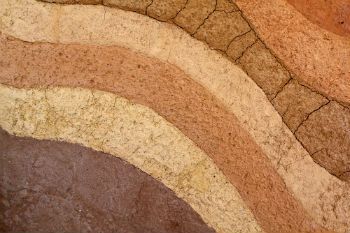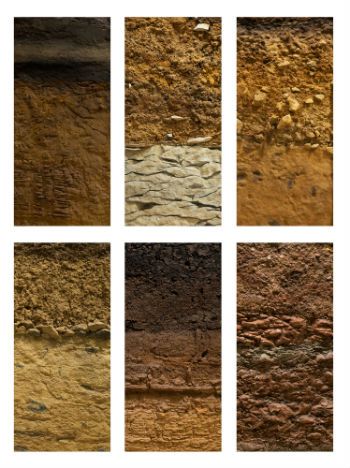The soil is the surface layer of the earth crust. It is a complex composed of mineral and organic materials.
Soil formation and composition
The soil is the result of the action of several elements: water, climate, living organisms, relief, type of rock and the time of action of these factors. Due to the joint action of the various factors, different types of soil originate.
The decomposition of rocks by the action of physical, chemical or biological agents gives rise to mineral components. The incorporation and decomposition of organic animal and vegetable elements (humus), give fertility to the soil.
Soil Classification
Regarding color , most soils can be grouped into three types:

- reddish and yellow – indicate strong presence of iron oxide
- dark – indicate strong presence of organic materials
- clear – indicate the low presence or absence of organic materials.
Regarding texture , soils are classified:

- sandy – retains little water and nutrients, as they have large pores, facilitating the flow of water
- clayey – clayey soil retains more water and nutrients (calcium, potassium, iron)
- organic – is composed of organic materials in the process of decomposition, in addition to sand and clay
Solo in Brazil
Among the most common soils found in Brazil, the massapê and terra roxa stand out:
- Massapê – is a dark, clayey and organic soil, originated from the disintegration and decomposition of the gneiss rock. It appears in a large section of the Brazilian Northeast, in the region called Zona da Mata, where sugar cane has been cultivated since the 16th century, which adapts very well to this type of soil.
- Terra roxa – is a reddish and volcanic soil, originated from the decomposition of basalt. It appears in the west of the state of São Paulo and in the north of Paraná. It is excellent for agriculture and since the last century it has been used for coffee growing.
Curiosity: Did you know?
The purple earth is actually red and not purple. The name came up with the Italian settlers of the coffee plantations that spoke “terra rossa”, which in Italian means red. The people mistook rossa for purple.
